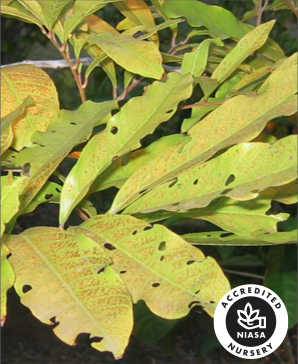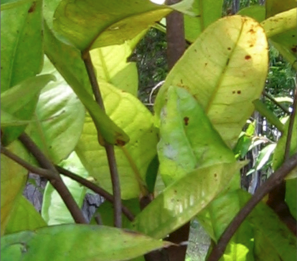Local North Queensland information for Local North Queenslanders.
Banksias are particularly prone to iron deficiency, and benefit from an application of iron chelates as soon as you see the foliage starting to yellow…
 There are two main causes of yellowing in natives:
There are two main causes of yellowing in natives:
- You’ve added uncomposted organic matter into your soil;
- Your soil has an iron deficiency, too much phosphorus, or the pH is wrong.
Uncomposted Organic Material
Cause:
This is technically referred to as ‘nitrogen drawdown’, and it means that your plants are suffering from a nitrogen deficiency. Since nitrogen is a major component of the chlorophyll which makes plants green, then a nitrogen deficiency results in your plants looking yellow, pale and faded.
Adding uncomposted plant material to your soil directly causes nitrogen deficiency. Soil micro-organisms get to work on this fresh material, breaking it down and decomposing it, but at the same time using up a large amount of nitrogen. This results in a lack of nitrogen in the soil, and your plants go yellow.
Cure:
This is relatively simple to fix by adding nitrogen. In theory, the easiest and simplest way is to use a nitrogen fertiliser such as sulphate of ammonia or urea. However, both these products are pretty concentrated and it is very easy to overdo it and kill your plants. (Remember: fertiliser is like medicine – the right amount will fix the problem, an overdose can kill.) For this reason we do not recommend that you use these unless you’re absolutely certain you know what you’re doing.
The safest cure is to use one of the fertilisers we recommend for normal use. Fertilisers such as Incitec CK 77S and Searles Native Plant Food contain about 13% N, which is enough nitrogen to green your plants up without killing them.
Refer to Information Sheet No 5 “Fertilising your native plants” for the full info on fertilising natives.
Prevention:
Don’t dig uncomposted organic material into your soil! Either compost it first in a compost heap until it’s well rotted down, or spread it on top of your soil as mulch.
Iron, Phosphorus or pH
Cause:
Many native plants, particularly banksias, grevilleas and related members of the Proteaceae family, are very fussy about iron, phosphorus and pH.
Too much phosphorus in the soil will poison many natives. The main symptom is severe yellowing of the leaves.
If the soil is deficient in iron, the leaves will also go yellow; and if the pH is incorrect the plant may not be able to take up nutrients from the soil and therefore will look yellow.
Cure:
A simple and very effective cure is to add iron. Chelated iron works magic, and is available from the gardening section of most hardware stores. Read the packet for the recommended rate; however, it is very difficult to poison plants with iron, so the rate is not critical.
Adding iron obviously counteracts an iron deficiency, but since iron ties up phosphorus it will also cure a phosphorus toxicity. Furthermore, iron tends to lower the pH of the soil, and since natives require an acid (i.e. low) pH, then iron helps to fix this problem too. Please read Info-sheet No 5 “Fertilising your native plants”.
Prevention:
Don’t use fertilisers with a phosphorus content of more than 3%. While it is possible to fix the problem with iron, the chances are that you’ll kill your plants with phosphorus first.
Banksias are particularly prone to iron deficiency, and benefit from an applications of iron chelates as soon as you see the foliage starting to yellow.
Refer to Info Sheet No 5 “Fertilising native plants” if you are tempted.
 Compost or Mulch?
Compost or Mulch?
Mulch is a thick layer of organic material spread over a garden bed like a blanket. Mulch is placed ON TOP of the soil and acts as an insulating layer to reduce evaporation, keep the soil cool and prevent weed growth.
Mulch is undecomposed organic matter (such as hay, wood chips etc.) and should NEVER be dug into the soil, as it will cause nitrogen drawdown and yellowing in your plants.
Compost is organic matter (eg. vegetable peels, grass clippings etc.) which has been allowed to age and rot down over a period of time. Once fully decomposed, compost can be dug into the soil to enrich and condition the soil.

